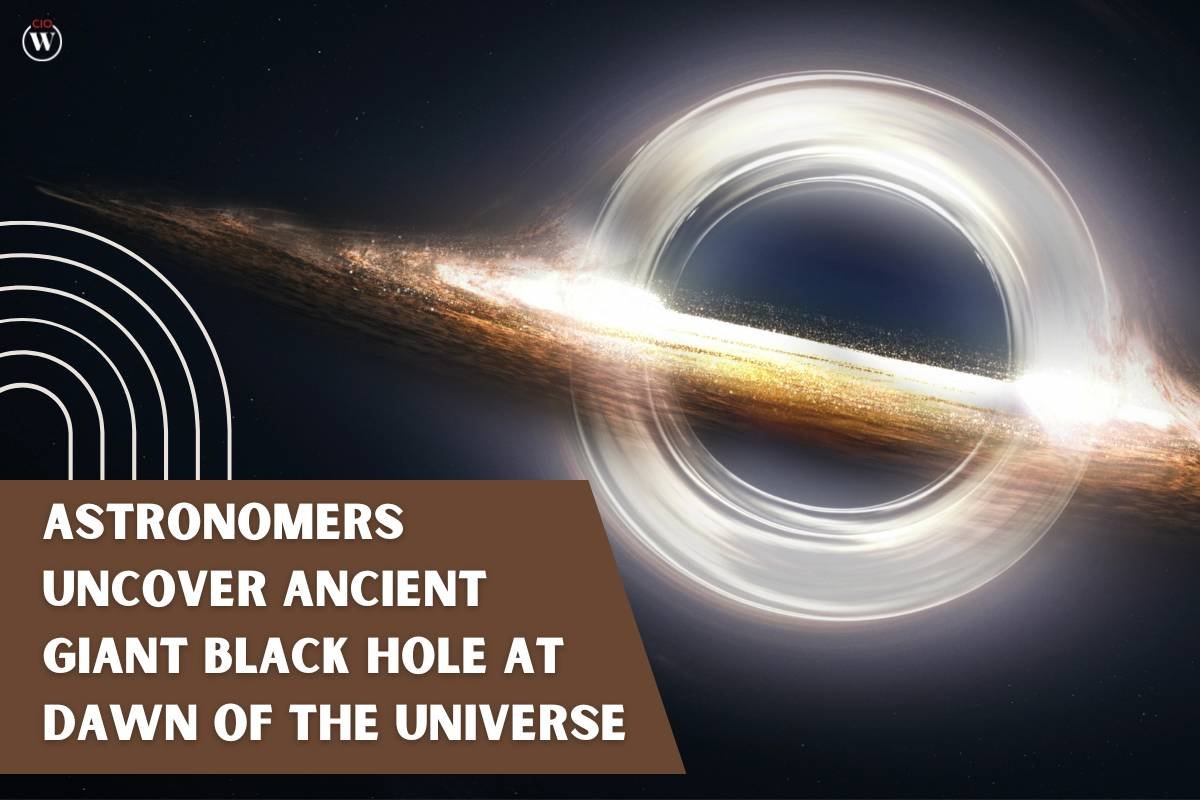In a groundbreaking revelation, astronomers using the James Webb Space Telescope (JWST) have identified the oldest Giant Black Hole ever detected, offering a fascinating glimpse into the cosmic history. According to a report by The Guardian on Sunday (Dec 10), the colossal black hole boasts a mass over a million times that of the Sun and dates back more than 13 billion years, emerging just 440 million years after the big bang. This extraordinary finding challenges existing theories, pushing back the origins of black holes and suggesting they either formed exceptionally large or underwent rapid expansion in the early stages of the universe.
The Enigmatic Black Hole and Astrophysicists’ Surprising Observations
Despite the elusive nature of black holes, the astronomers did not capture a direct image of the ancient behemoth. Instead, they identified key signatures of its accretion disk, the swirling halo of gas and dust that envelops the Giant Black Hole, making it discernible through indirect means.
Professor Roberto Maiolino from the University of Cambridge, who spearheaded the observations, expressed his astonishment at the black hole’s massive size, stating, “The surprise is in it being so very massive. That was the most unexpected thing.” This revelation challenges existing assumptions about the growth rate of black holes, indicating that some might have expanded at an unprecedented pace during the early stages of the universe.
Professor Andrew Pontzen from University College London (UCL), not directly involved in the research, remarked that the observations deepen the longstanding mystery surrounding the origins of black holes. He noted, “Understanding where the black holes came from in the first place has always been a puzzle, but now that puzzle seems to be deepening.” The findings suggest that the growth of black holes may have occurred at a rate far exceeding previous estimations, adding a new layer of complexity to the understanding of these enigmatic cosmic entities.
Context and Background on Black Holes
The recent discovery adds to a series of remarkable findings by NASA’s space observatory, shedding light on the cosmic mysteries that continue to captivate scientists and stargazers alike. To provide context, NASA describes black holes as astronomical objects characterized by an intense gravitational pull, preventing even light from escaping their grasp. The event horizon, the surface of a black hole, marks the boundary beyond which escape velocity surpasses the speed of light, creating a region of absolute darkness.
NASA classifies black holes into two main categories: stellar-mass black holes, which range from three to dozens of times the Sun’s mass and are scattered throughout our Milky Way galaxy, and supermassive black holes, with masses ranging from 100,000 to billions of times that of the Sun, typically found at the centers of large galaxies.
Once formed, black holes can grow by accreting matter drawn into them, including gas stripped from neighboring stars and even other black holes. As scientists delve into the mysteries of the universe, each new discovery, such as the ancient giant black hole, deepens our understanding of the cosmos and challenges preconceived notions about its evolution.
Also read: James Webb Space Telescope Discovers Most Distant Active Supermassive Black Hole









